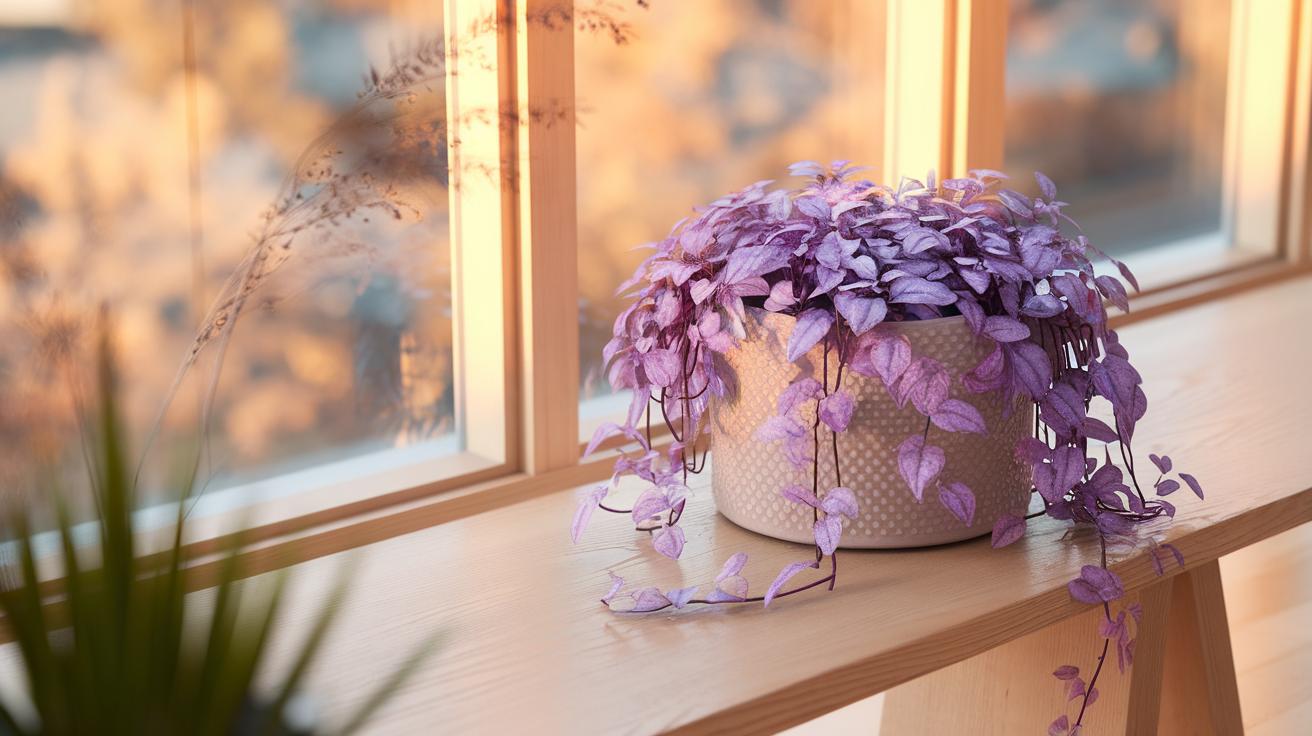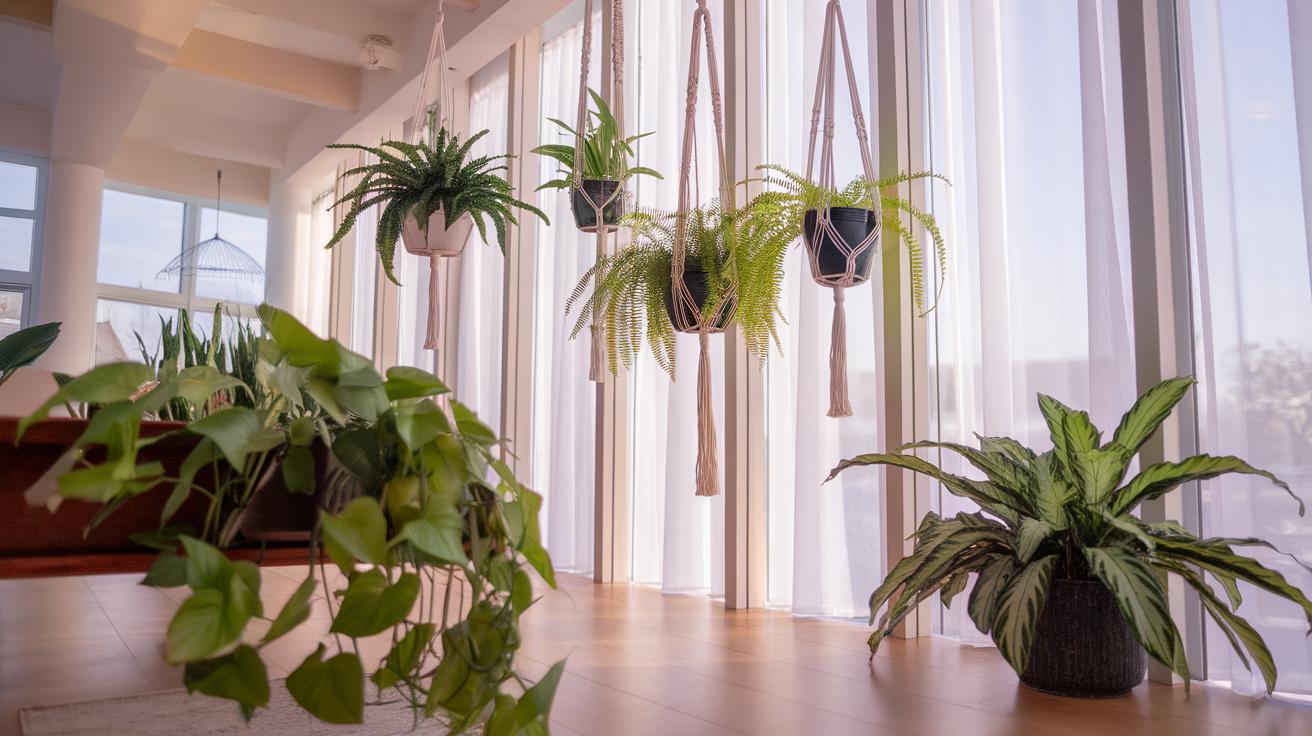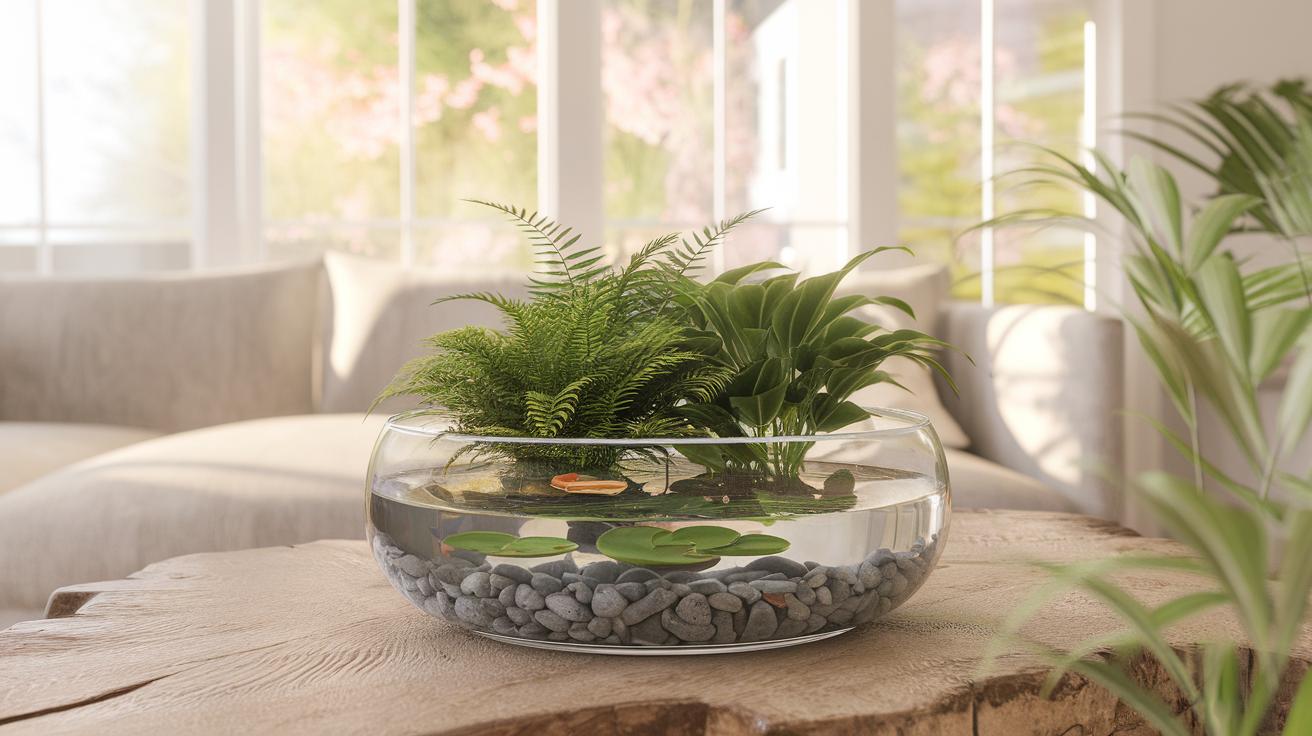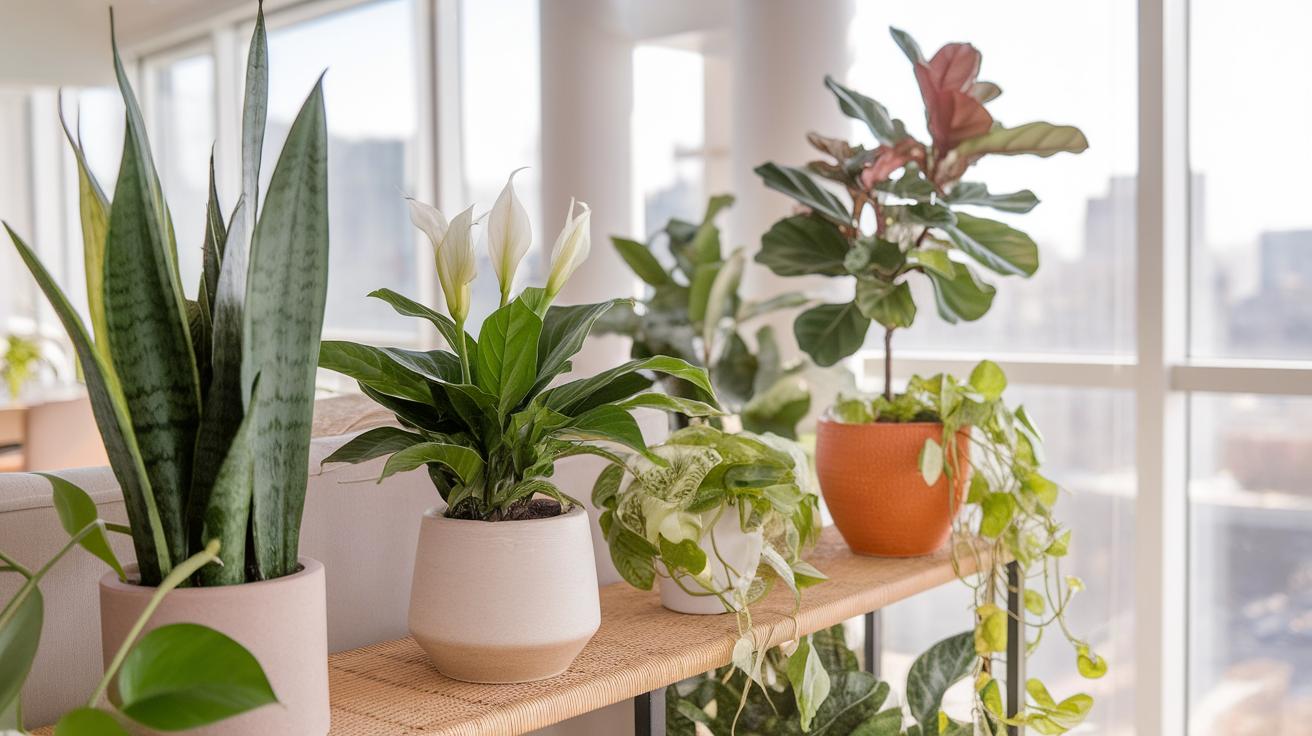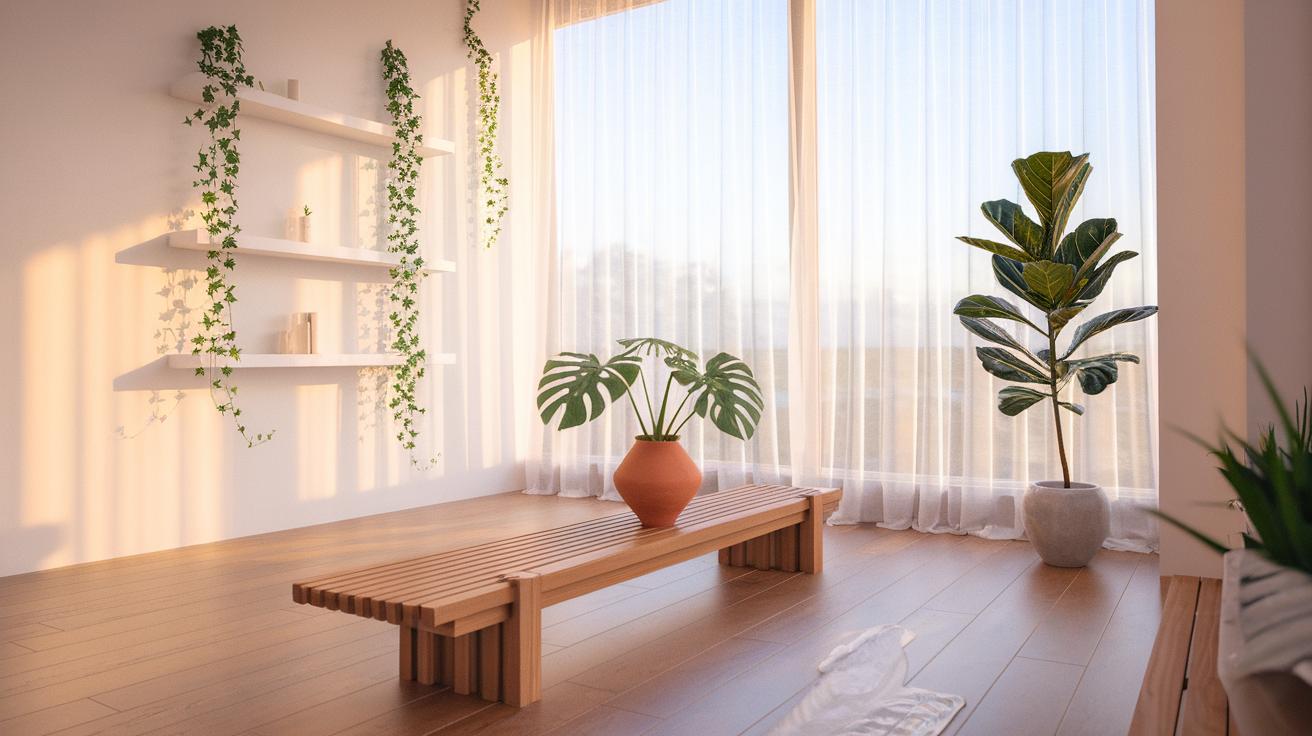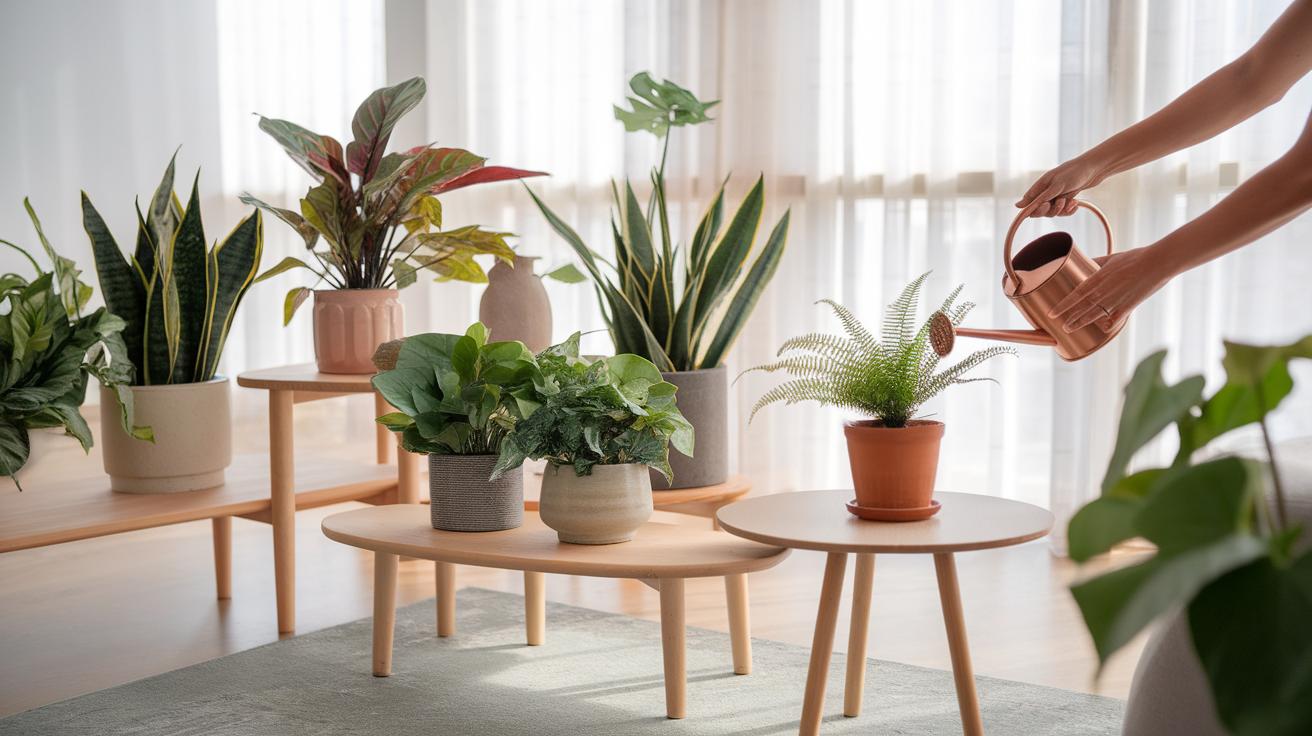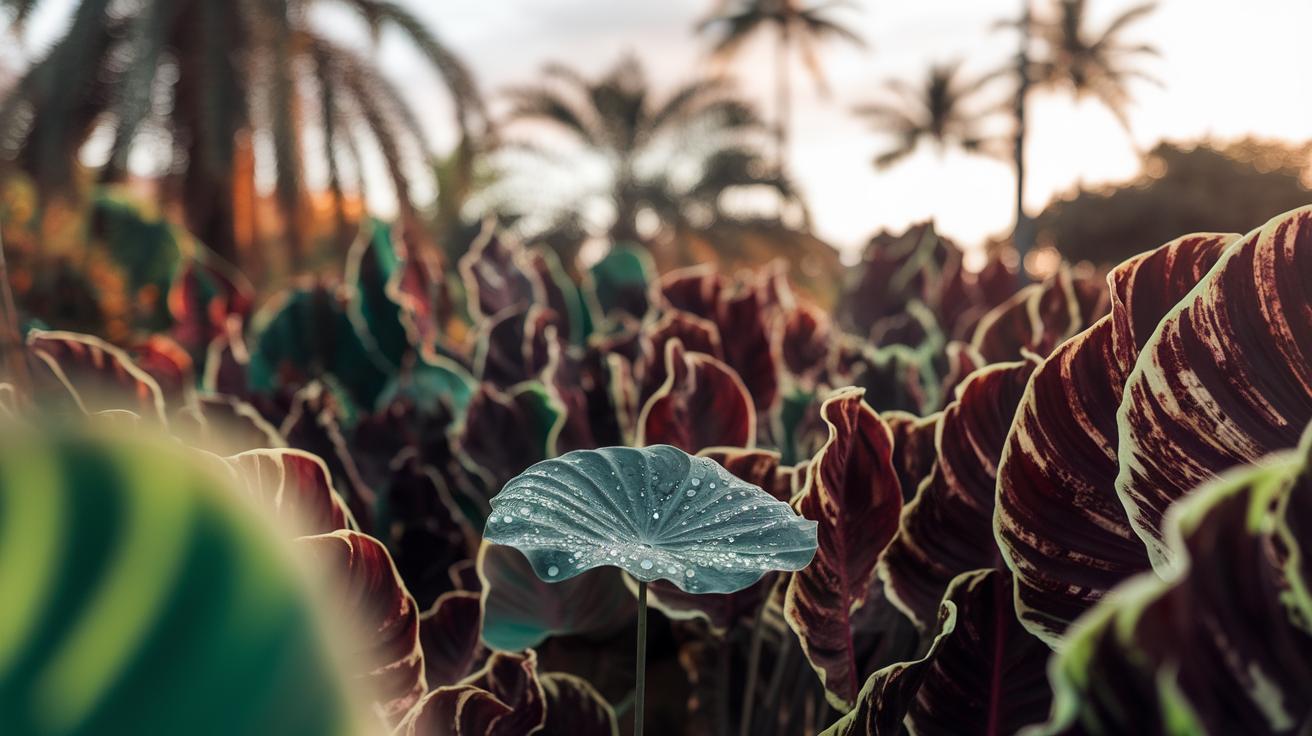Introduction
The Purple Heart plant, scientifically known as Tradescantia pallida, stands out for its striking purple-violet leaves and trailing growth habit. Popular as an ornamental plant, it thrives both indoors and outdoors, providing vibrant color to your space. This guide helps you understand the care needed to maintain its bright foliage and robust health. You will learn about the plant’s basic needs, from light and watering requirements to soil and temperature preferences. Understanding these essentials can improve your success in growing this unique plant.
Many gardeners and plant lovers face challenges in keeping their Purple Heart plants looking lively. Common issues include fading color and unhealthy growth, often caused by neglecting specific care aspects. By following this guide, you will explore practical methods to encourage your plant’s natural beauty and vigor. Are you ready to enhance your plant care routine and enjoy the lively purple hues of the Tradescantia pallida? This article offers step-by-step advice to help you achieve that goal.
Understanding the Purple Heart Plant
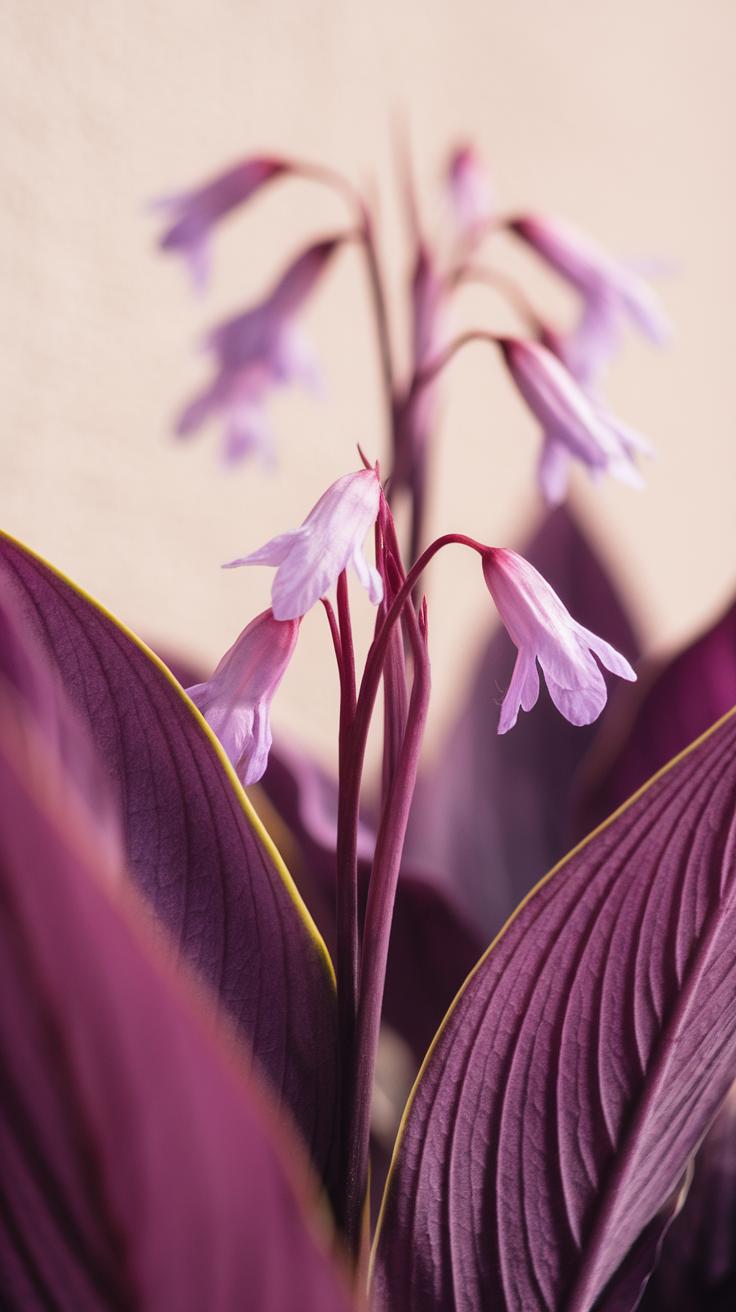
The Purple Heart plant, known scientifically as Tradescantia pallida, stands out with its deep purple, sword-shaped leaves. These leaves often create a lush, trailing effect that works well hanging from pots or spilling over garden edges. Its small, three-petaled pink or purple flowers bloom intermittently, adding subtle contrast to the vivid foliage. You might hear it called Purple Heart, Wandering Jew, or Purple Queen.
This plant is popular for both indoor and outdoor use because of its bold color and easy growth habits. People appreciate its ability to brighten spaces with minimal effort. The trailing stems also make it ideal for balconies, hanging baskets, or as ground cover.
When you bring Tradescantia pallida into your home or garden, you add a touch of vibrant color that stays fresh throughout the growing season. Have you considered using its trailing habit to add depth to your plant arrangements?
Origins and Botanical Profile
Tradescantia pallida originates from Mexico and Central America, where it grows naturally in warm, semi-humid climates. It thrives as a low-growing groundcover, often spreading rapidly along the ground. Its stems branch freely, creating a dense mat that helps control soil erosion.
The plant’s narrow, lance-shaped leaves display a rich purple to violet hue that intensifies under bright sunlight. Flowers are small but distinct, usually pink to purple, appearing mainly in summer. This flowering is short-lived but contributes to the plant’s overall appeal.
Understanding its natural environment helps you care for it wisely. You might ask yourself if your home or garden mimics these warm, moderately bright conditions to support healthy growth.
Popular Uses and Popularity
The Purple Heart plant’s ability to thrive in various settings makes it a favorite among gardeners and houseplant enthusiasts. It grows well in containers, making it a versatile choice for patios, balconies, and indoor shelves. Its trailing vines create eye-catching borders in gardens, especially when combined with green or silver-leaved plants.
This plant’s hardy nature requires little maintenance, which adds to its appeal. Its intense purple color stands out, even in shaded spots where other plants might fade. Gardeners often use it to fill bare spaces quickly while maintaining a striking look.
Do you want a plant that adds color with minimal fuss and fits well in small spaces or large gardens? Tradescantia pallida may be exactly what you need to enhance your green areas effortlessly.
Light Needs for Vibrant Color

How much light your Purple Heart plant receives shapes both its growth and the vividness of its leaves. Bright light encourages the rich purple tones traderscantia pallida is known for. Too little light causes the leaves to fade into greenish shades, making your plant lose its striking appeal.
Outdoor conditions usually provide stronger, more direct light than indoors. When placed outside, the plant thrives in sunny spots, showing intense purple color and fuller growth. Indoors, the light level tends to be lower. That means you need to find the brightest spot possible without harsh direct sun that might scorch the leaves.
Recognizing the light quality and adjusting your plant’s location accordingly can make a big difference. Are your Purple Heart’s leaves turning dull? It might be getting less light than it needs. Finding the right light balance helps maintain growth vigor and that signature purple shade you want in your home or garden.
Sunlight and Brightness Impact
Full sun brings out the deepest and most vibrant purple tones in Tradescantia pallida. When your plant receives direct sunlight for several hours a day, the pigments in the leaves intensify. This makes the purple color stand out sharply compared to shaded plants.
If the plant only grows in shade or low light, its leaves shift toward green. This greenish tint occurs because the plant produces more chlorophyll to capture scarce light, overshadowing the purple pigments.
The best light setup provides several hours of direct sun or bright, indirect light. Avoid harsh afternoon sun in very hot climates to prevent leaf burn. Morning sunlight or filtered light through a sheer curtain offers an ideal balance for most locations.
Indoor Light Conditions
Indoors, position your Purple Heart near a bright window that receives indirect sunlight. East or west-facing windows work well because they provide gentle morning or afternoon light. South-facing windows may deliver too much direct light unless filtered by blinds or curtains.
When natural light is limited, try supplementing with a fluorescent or LED grow light for about 12 to 14 hours daily. This helps keep leaves vibrant and supports steady growth. You might also rotate the plant regularly so all sides receive equal light exposure.
If you notice your plant’s purple color fading or stems becoming leggy, it indicates low light. Moving the plant closer to a light source or using artificial lighting can restore its intense color and compact shape.
Watering Your Purple Heart Correctly

Water plays a key role in keeping your Purple Heart plant healthy and colorful. Overwatering can cause root rot, while underwatering might dry out the leaves and dull their purple hue. To avoid these problems, check the soil moisture before watering.
Stick your finger about an inch into the soil. If it feels dry at that depth, your plant needs water. If the soil is still moist, wait a few days before watering again. Signs of overwatering include yellowing leaves and a soggy soil surface. On the other hand, brown leaf tips and curling leaves often mean your plant is thirsty.
Keeping the right balance will help your Purple Heart stay vibrant. Are you paying close attention to the soil before reaching for the watering can? This simple check can make a huge difference in your plant’s health and color.
Water Requirements and Soil Moisture
Knowing when to water your Purple Heart depends largely on the soil moisture. Feeling the soil is the best way to tell if your plant needs water. Push your finger about one inch into the soil. Dryness at this depth indicates it’s time to water.
Overwatering leads to soggy soil and root rot. Leaves may turn yellow or drop if the plant is waterlogged. Underwatering deprives the plant of moisture, causing leaf edges to brown and curl. These signs tell you when you need to adjust your watering habits.
Ask yourself: Is the soil consistently damp, or does it dry out between waterings? Finding this balance is critical for maintaining strong roots and vibrant purple leaves in your Purple Heart plant.
Adjusting Watering Seasonally
Watering needs change with the seasons. During the spring and summer growing phase, your Purple Heart absorbs more moisture and requires regular watering. The soil should remain evenly moist but not soaked.
In fall and winter, the plant’s growth slows down. Water less often, allowing the soil to dry more between watering sessions. This rest period reduces the risk of root problems and helps the plant conserve energy.
If your home is cool or dry in winter, check your plant’s soil weekly. Would your Purple Heart benefit from slightly less water in colder months? Paying attention to these seasonal changes supports strong, colorful foliage year-round.
Best Soil and Potting Tips
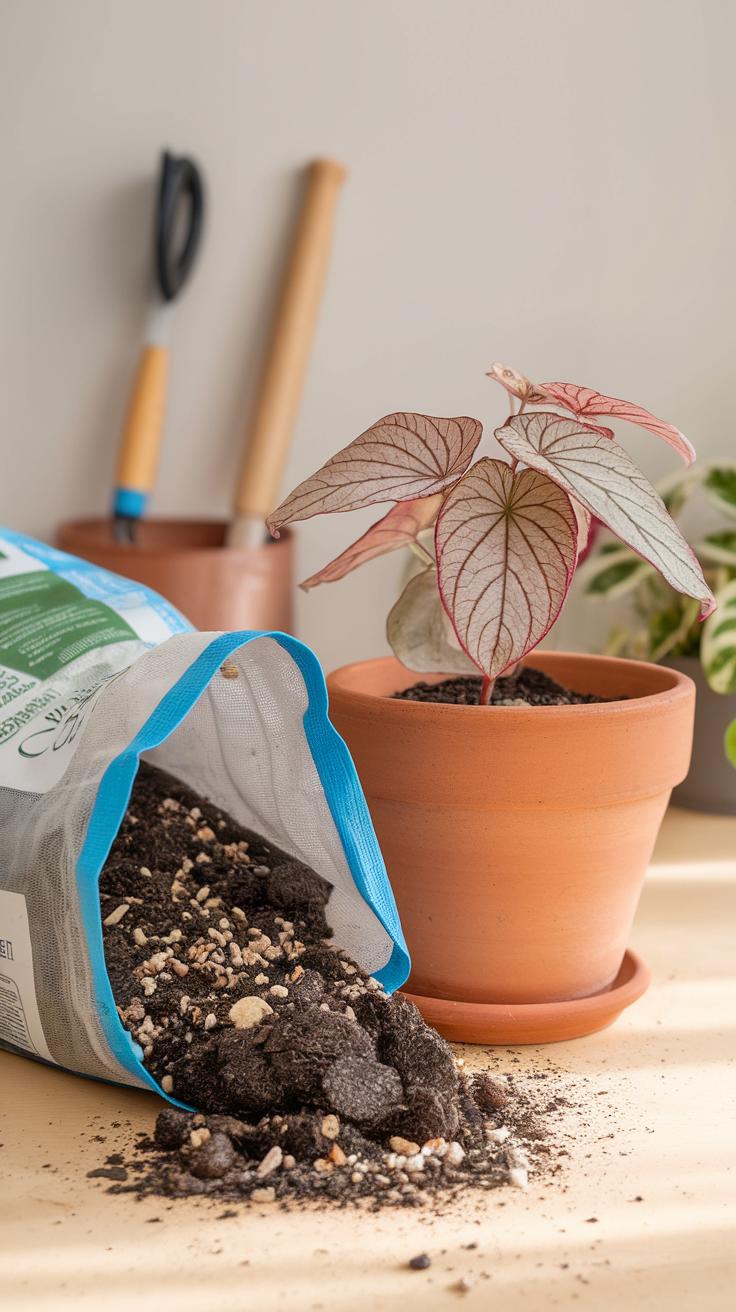
Soil Preferences
Your Purple Heart plant needs soil that drains well. Soil that holds too much water can cause root problems. A mix that combines regular potting soil with sand or perlite works well. This blend improves airflow and prevents water from sitting around the roots. You want soil that keeps some moisture but lets extra water flow through easily.
Adding organic matter like compost or peat moss helps feed your plant. Nutrient-rich soil encourages healthy leaves and vibrant color. Watch how the soil feels between waterings to avoid sogginess. If you notice water pooling, adjust the mix to add more drainage materials. What kind of soil mix have you tried that worked best for your Purple Heart?
Choosing and Preparing Containers
Pick a pot with enough room for roots to grow but not so big that soil stays wet too long. A container about one size larger than the plant’s root ball is ideal. Make sure your pot has drainage holes. These holes are key to stop water from building up at the bottom and causing root rot.
When repotting, usually every 1 to 2 years, check the roots. Trim any that seem crowded or unhealthy. Fresh soil can boost growth by providing new nutrients. If you notice slower growth or yellow leaves despite good watering, it may be time to change the pot and soil. How often do you check your plant’s roots when repotting?
Temperature and Humidity Factors

Optimal Temperature Range
Tradescantia pallida thrives best in temperatures between 60°F and 85°F. When temperatures drop below 50°F, its growth slows, and leaf color may fade or turn dull. Cold conditions can cause the leaves to wilt or develop black spots. To protect your Purple Heart during a cold spell, move it indoors if you keep it outside, or place it away from drafty windows. During hot weather, avoid direct afternoon sun, which can scorch the leaves. Instead, provide bright but filtered light. Using a fan or opening windows can help lower indoor temperatures, but avoid sudden temperature changes. Have you noticed how your plant reacts to heatwaves? Adjusting temperature conditions can keep its foliage vibrant and healthy.
Managing Humidity Levels
Tradescantia pallida prefers moderate humidity, around 40% to 60%. Dry air can cause leaf tips to brown and edges to curl. Indoor heating tends to dry out the air, especially in winter, stressing your plant. To increase humidity, place a water tray near the plant or group it with other houseplants. Using a humidifier works well in very dry homes. Another option is misting leaves lightly once a day, but avoid overdoing it to prevent fungus. Watch for signs of stress like drooping or pale leaves, which often link to dry air. Are you able to spot these clues? Keeping humidity balanced supports the Purple Heart’s vibrant color and overall growth.
Propagation Methods for Purple Heart
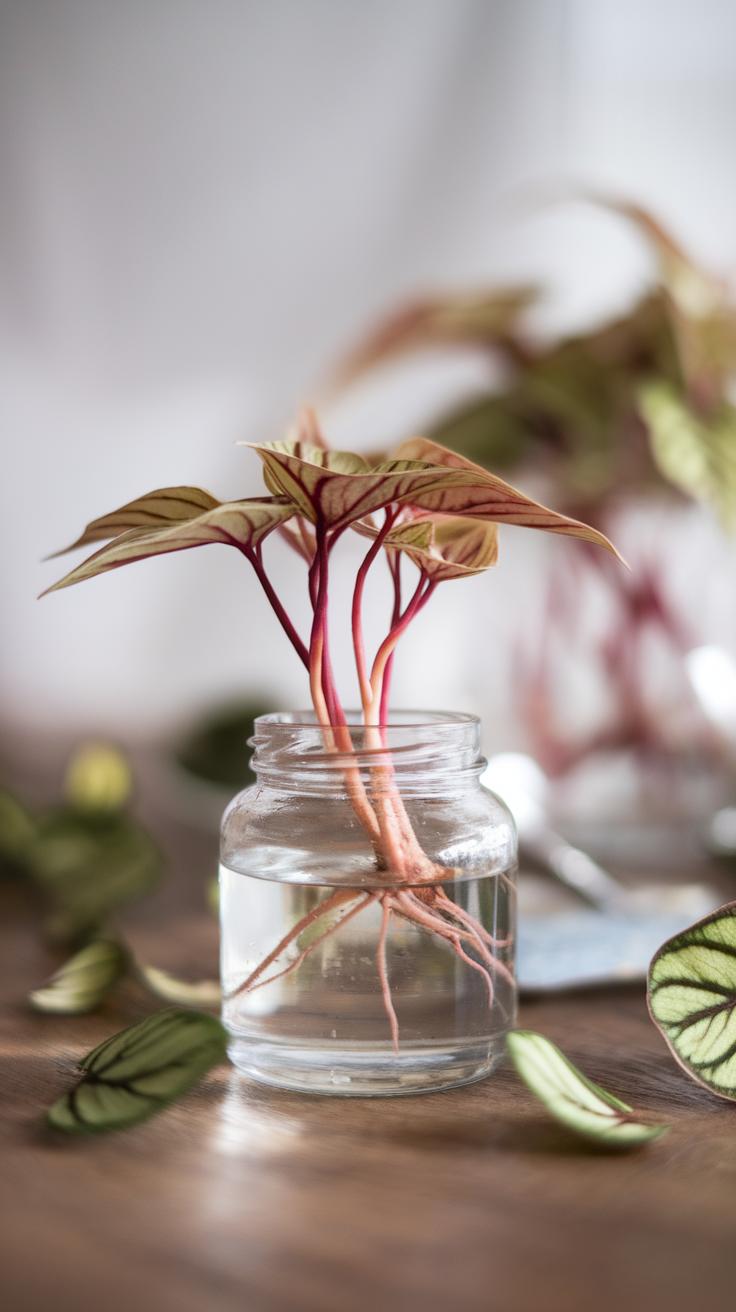
Propagating Tradescantia pallida starts with choosing healthy stems. Look for firm, deep purple stems that have several leaves. Cut sections about 4 to 6 inches long, making sure each has at least two or three leaf nodes. These nodes are where roots will develop, so don’t remove the leaves near them.
Trim the stem ends cleanly using sharp scissors or pruning shears. Remove leaves from the bottom half to prevent rot once planted. You can root cuttings in soil or water, depending on what’s more convenient for you. Cuttings placed in a glass of water should be refreshed regularly to avoid bacteria buildup.
Timing matters. Take cuttings during the growing season, typically spring through early fall. This ensures faster root growth and stronger plants. Avoid cuttings during periods of dormancy or extreme heat, as new roots struggle to form then. Would you like colorful new plants for your garden this season? Starting with simple cuttings is the way to go.
Taking and Preparing Cuttings
Begin by selecting stems that are healthy, avoiding any that are damaged or too woody. Use clean, sharp tools to make cuts just below a node. Cuttings should be about 4 inches long to balance leaf growth and root development. Remove leaves on the lower half to reduce moisture loss and prevent rot during rooting.
When preparing cuttings for soil, dip the cut ends in rooting hormone powder if available, though Tradescantia pallida often roots well without it. For water propagation, place the cut end into a clear container filled with fresh, room-temperature water. Change the water every few days to keep it clean.
You might ask, how quickly will roots appear? Typically, roots form within 7 to 14 days. Watch closely to avoid letting stems sit too long without transplanting once roots reach about 1 to 2 inches. This step helps prevent shock and supports healthy growth.
Caring for New Plants
Place your new cuttings in an area with bright, indirect light. Avoid direct sunlight, which can dry out or burn delicate new roots and leaves. Keep the temperature steady between 65 and 75°F to encourage root formation. High humidity helps, so misting or covering cuttings with a plastic dome can improve success rates.
The soil for rooted cuttings should be moist but not soggy. Overwatering leads to root rot, while too little water slows growth. Check soil moisture regularly and water lightly as needed. Air circulation is also vital to prevent mold and fungus but avoid cold drafts.
Patience is key—resist the urge to tug on cuttings to check roots too soon. When new leaves begin to grow, it shows the plant has established. Gradually introduce your new Tradescantia pallida to more sunlight over several weeks to build stronger, colorful foliage for your home or garden. Ready to see your garden flourish with new purple beauty?
Common Issues and How to Solve Them
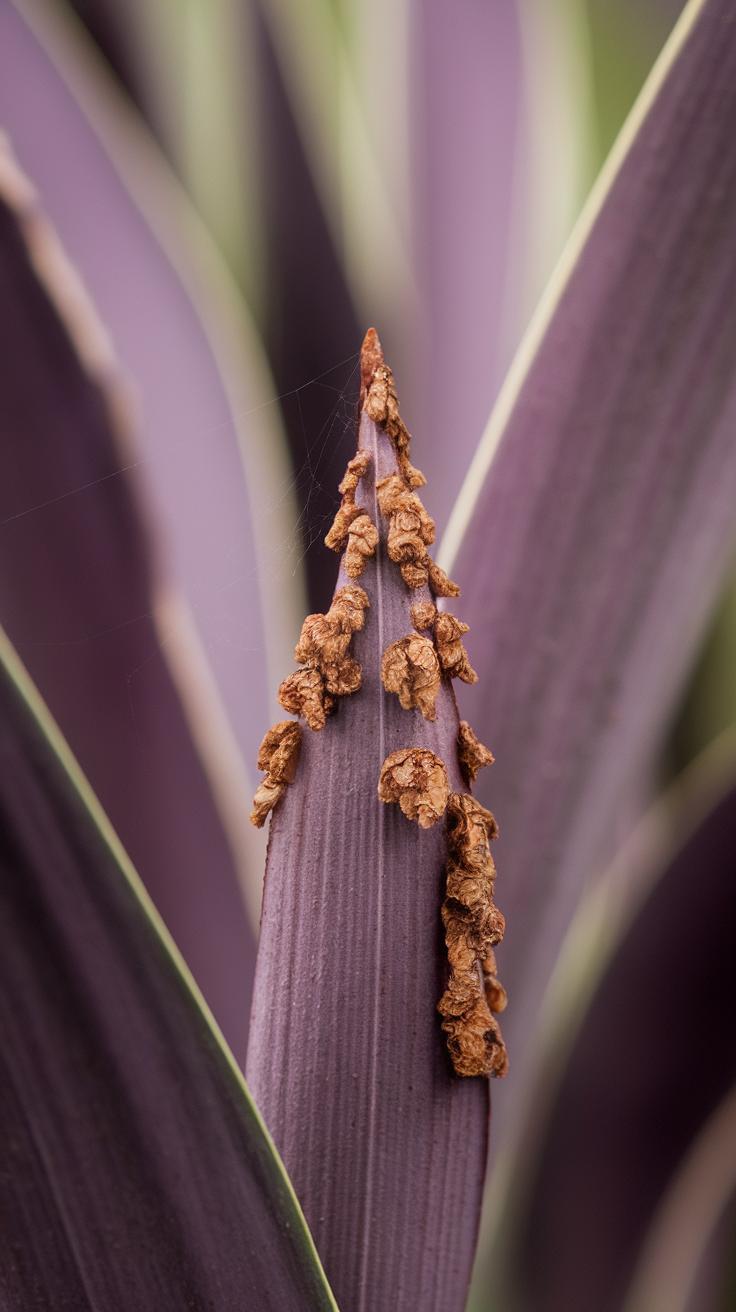
Leaf Color Fading Causes
Are your Purple Heart plant’s leaves losing their rich purple hue? This often happens because of too little sunlight. Tradescantia pallida needs bright, indirect light to keep its colors vibrant. Moving your plant closer to a sunny window can help restore the shade of purple.
Overwatering can also cause fading. When soil stays soggy, roots struggle to absorb nutrients, leading to dull leaves. Let the top inch of soil dry before watering again. On the other hand, too little water can stress the plant and dull its color. Find a balance where the soil stays slightly moist but not wet.
Check if your plant is near a heat source or in a drafty spot. Temperature stress can weaken leaf color. Maintaining a consistent room temperature between 60°F and 80°F supports vibrant foliage.
Pest Identification and Treatment
If you notice tiny green aphids or small caterpillars on your Purple Heart plant, act quickly. Aphids cluster on new leaves, sucking sap and causing leaf distortion. Caterpillars chew holes and skeletonize leaves.
Inspect your plant weekly to catch pests early. Wipe leaves with a damp cloth or spray with water to remove aphids. You can also use insecticidal soap or neem oil, spraying both leaf tops and undersides.
For caterpillars, pick them off by hand when possible. If infestations get severe, apply Bacillus thuringiensis (Bt), a natural bacterial spray that targets caterpillars without harming your plant.
Keep pests away by avoiding over-fertilizing and making sure air circulates around your Purple Heart. Would you consider placing sticky traps nearby to monitor for insect activity?
Using Purple Heart for Air Quality and Decoration
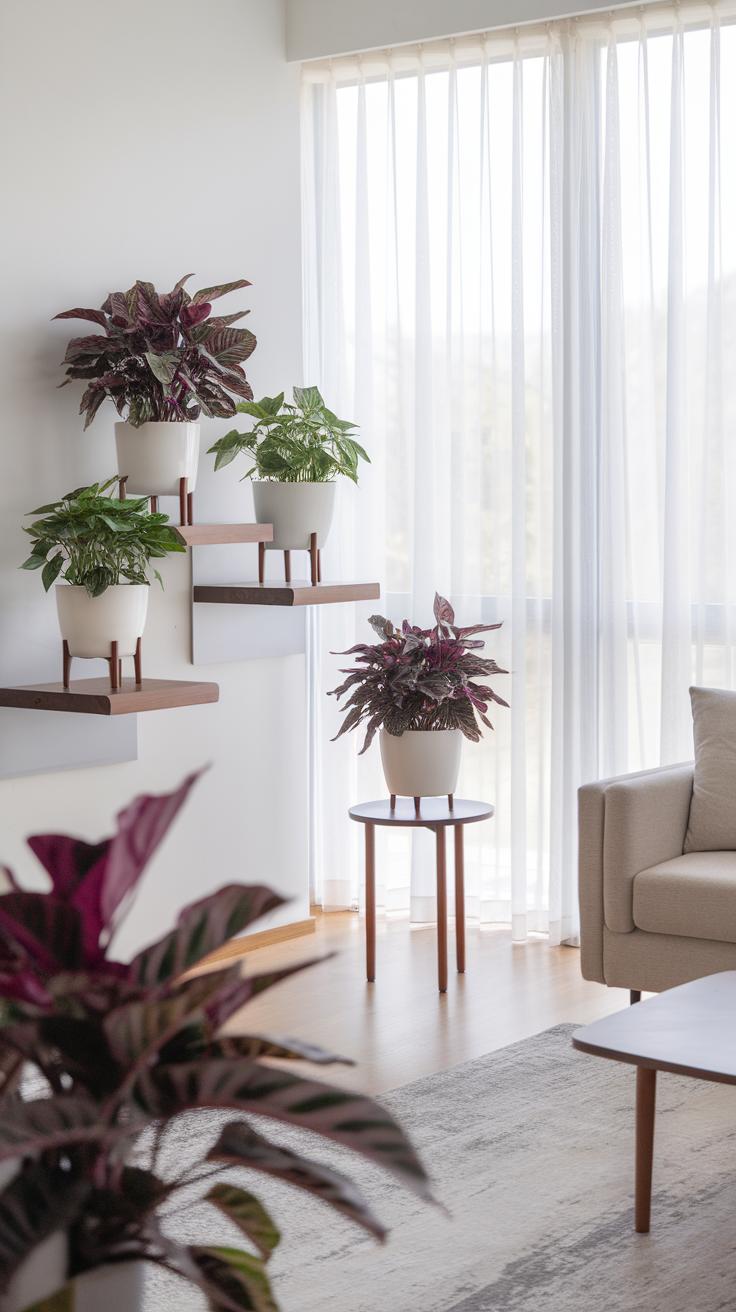
Air Purification Benefits
Tradescantia pallida, or Purple Heart, helps improve indoor air by filtering harmful pollutants. The plant can absorb volatile organic compounds (VOCs) like formaldehyde and benzene, which are common in household products and paints. These chemicals can affect your health, causing headaches or irritation.
Keeping Purple Heart plants inside your home can reduce these toxins and increase oxygen levels. You might notice fresher air and a cleaner atmosphere when you place them in rooms where you spend most time. Have you thought about which rooms in your home could benefit from cleaner air?
Besides its purple leaves, the plant works quietly to create a healthier environment. Its ability to filter air makes Purple Heart a smart choice for bedrooms, offices, or any indoor space. This way, you improve air quality while adding beauty to your home.
Creative Decorative Uses
Purple Heart adds color and texture to both indoor and outdoor spaces. Its rich purple leaves stand out in containers, hanging baskets, or ground cover areas. You can plant it along garden borders to create a striking contrast with green or white plants.
Inside your home, try placing Purple Heart in decorative pots on shelves, window sills, or tabletops. It pairs well with neutral-colored decor or wood furniture for a modern look. Mixing it with trailing plants like pothos can enhance visual interest.
For outdoor landscaping, use Purple Heart to line walkways or in rock gardens where its vivid color draws attention. Its creeping growth habit fills spaces and softens hardscape elements. What places in your home or yard could use a splash of purple?
Maintenance and Seasonal Care
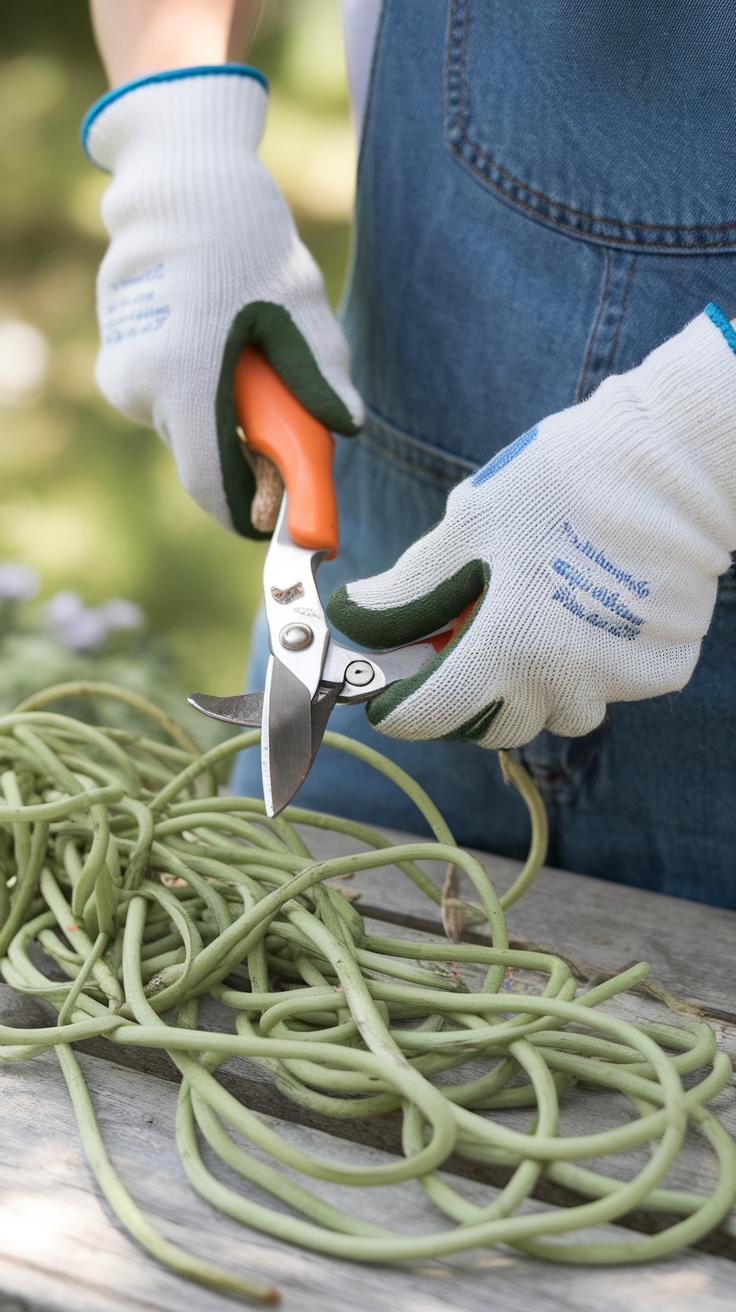
Routine Maintenance Tasks
Pruning your Purple Heart plant regularly helps it stay full and healthy. Trim back any leggy or weak stems to encourage bushier growth. Remove yellowing or dead leaves to keep the plant looking neat and to prevent disease. Use clean, sharp scissors or pruners to avoid damaging the stems.
Keep the leaves free of dust by gently wiping them with a soft, damp cloth. Clean foliage improves the plant’s ability to photosynthesize and stay vibrant. Avoid harsh chemicals; plain water works best. Check your plant weekly for pests or any signs of stress.
Seasonal Adjustments
During summer, Purple Heart plants grow quickly and benefit from more frequent watering and feeding. Water when the top inch of soil feels dry. Apply a balanced liquid fertilizer every two to four weeks to support vibrant foliage.
Winter slows down the plant’s growth. Cut back on watering to prevent root rot and reduce feeding to once every six to eight weeks. Keep the plant in a well-lit spot but shielded from cold drafts. Watch for signs of stress, like leaf drop, which can indicate your plant needs a little more warmth or light.
Conclusions
Your Purple Heart plant needs attention to light, watering, soil, and temperature to maintain its signature vibrant purple color. Ensuring the right conditions improves its trailing growth and overall health. Taking time to monitor and adjust these factors regularly will result in a thriving plant that adds rich color to your home or garden. The purple-violet leaves respond well to bright light and balanced watering, so you can expect consistent growth with these basic care strategies.
Growing Tradescantia pallida successfully involves more than just planting it and waiting. Paying attention to common issues and employing proper care methods leads to a visually appealing and long-lasting plant. You now have the knowledge to troubleshoot and optimize your plant’s environment. Are you prepared to apply these tips and see your Purple Heart plant flourish? Keep experimenting with these practical care steps and enjoy watching your plant express its best colors.


